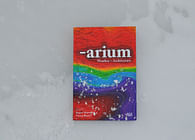
Re-rigging — History
Refshaleøen stands both as an icon of industrial production as well as an emergent example of how new cultural uses can revitalize once private space into a public amenity. Our proposal seeks to merge tradition with technology to allow for informal uses to remain on the site while also creating a cultural complex that celebrates the site’s heritage. We ask: how can sustainable energy production learn from Danish traditions and be sensitive to the past, present, and lead us to the future?
While its historic legacy is one of industrial pollution and contamination, the B&W shipyard, established on the island in 1871, is also a site of Danish innovation. At the height of its use, the shipyard employed 8,000 workers and created iconic ships such as the Dannebrog, Friggate Jylland, and SS Selandia. These three ships were emblematic of technological transformations in nautical transport and reveal three typologies of ships that were specifically fabricated on the site — steam-engine / paddle hybrid, steam engine, and hybrid diesel power. These ships marked a technological transformation from large ships powered by sails (wind) to ships powered by various fossil fuels. Yet, as emergent technologies, all three types still employed large masts and sails to ensure the functioning of the vessels under all conditions.
Our proposal employs the sails of these three ship typologies, which are unique to the site, as energy harvesters. Instead of using sails to capture wind and thrust a ship into motion, we dissociate the ship from the water and firmly fix it on land. By doing so, it consolidates the wind forces in the sails of the ship, which are re-rigged with a piezoelectric membrane to harvest this energy. Thus, these nautical icons of technological power are re-rigged to sail ships that harness the abundant wind forces through emergent material science. The result is a performative museum of the site’s history, wherein visitors can tour these complex vessels and learn about their construction and technological innovations. With its adjacency to the historic nautical context of Copenhagen and the Little Mermaid statue, the site is well positioned to leverage its nautical legacy in a cultural and ecological manner. Further, by consolidating the energy capture into three objects in the landscape, it leaves large parts of the site open for the current soft-uses of the island — film screenings, flea markets, concerts and festivals, as well as community gardens. We view these contemporary uses of the site as critical to establishing a dynamically evolving complex that embraces the community’s needs. Accordingly the site merges the cultural celebration of heritage with contemporary cultural needs and energy production — a living performative museum.
Re-rigging — Technology
The three ships are arranged on the site to maximize energy capture from the prevailing winds from the South-West. Further to the wind capture, the ships are also oriented to create a series of soft spatial boundaries at various scales for intimate uses to large collective events. In section, the ships are placed at a consistent top datum, or the water line when they were in use, which allows all the sails equal access to the wind flow. While there is no singular ideal wind orientation, the scheme has flexibility in that the direction of the sails can easily be re-rigged daily, weekly, or seasonally to optimally harvest differential wind patterns. Here, we combine the refinement of wind harvesting by centuries worth of empirical research by Danish sailors with a high-tech peizoelectic membranes for the sails.
The ship’s sail and mast configuration already has the potential to capture energy from prevailing winds and forces. By integrating the sails with piezoelectric fibers and subjecting them to mechanical excitations they would be capable of transforming mechanical energy into usable electrical energy. The ship’s sail will be made of two types of fibers: the warp which is composed of polyvinylidene difluoride piezoelectric fibers and the wefts which are metalized conductive yarn which are able to conduct the electricity produced.
This fabric will have the ability to generate electricity against stimulus such as mechanical strain or vibration from natural winds. This fabric is suitable for the ship’s sails as it is lightweight, flexible, and heat resistant. Naturally a ship elevates its sails in order to capture undisrupted wind patterns, which are an optimal location for capturing maximum forces. This energy is captured in the fabric, and transferred to the yard, down through the mast, and stored in a concealed transformer housed in the ship’s hull.
Based on annual wind averages of 21 Mph and a total sail area of 331.37 square meters, the sail’s area is able to generate 1,248 mega-watt hours, or enough to power approximately 115 houses annually.
Status: Competition Entry
Location: Copenhagen, DK
Firm Role: Lead Designer
Additional Credits: Office: The Open Workshop
Design Team: Neeraj Bhatia, Cesar Adrian Lopez, Blake Stevenson
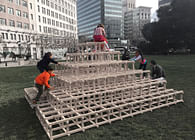
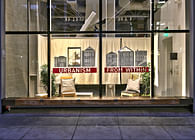

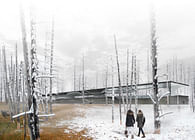

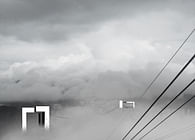

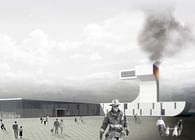



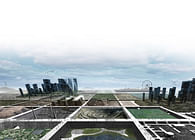
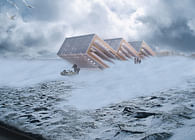
![Bracket [Goes Soft] Bracket [Goes Soft]](https://archinect.gumlet.io/uploads/fh/fhcvzt2j1lysvlgm.jpg?fit=crop&auto=compress%2Cformat&enlarge=true&crop=entropy&w=195&h=140)
